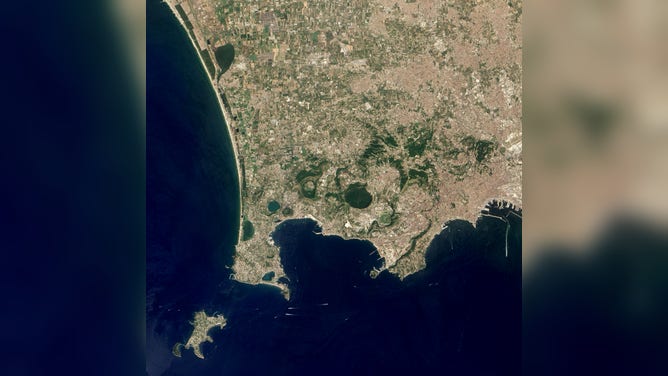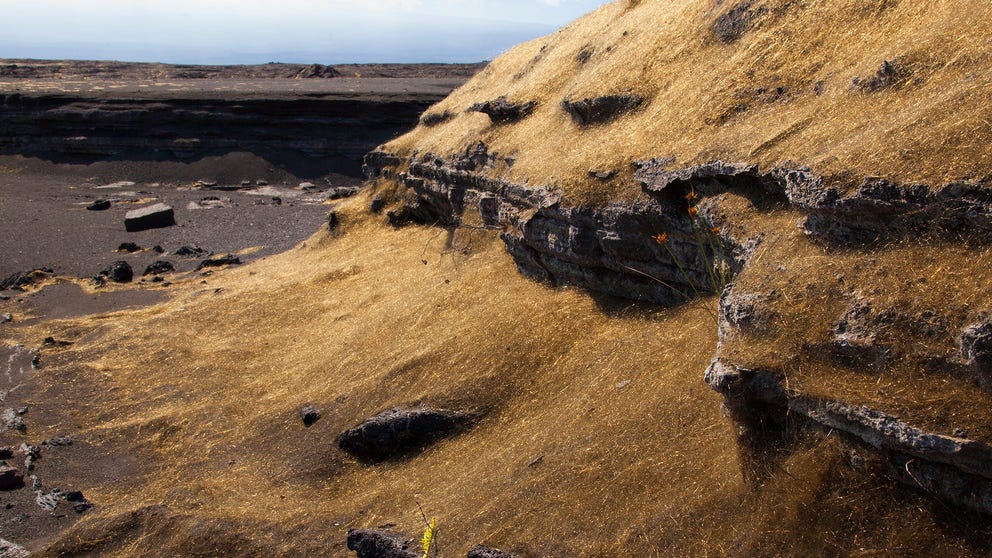Italy's Campi Flegrei volcano could erupt for first time since 1538, study shows
Campi Flegrei has been in a "restless" period for about 70 years. The scientists say this modeling is the first of its kind in an attempt to forecast the rupture of an active volcano.
How do volcanoes make 'Pele's Hair'?
As Hawaii's Mauna Loa volcano awakens from a decades-long slumber, officials are not only warning those in the area about ash fall and airborne gases but also the potential for volcanic glass fibers known as "Pele's Hair."
Campi Flegrei, an Italian volcano that last erupted nearly 500 years ago, is becoming more restless and could erupt once again, according to a new study.
Located in Southern Italy, Campi Flegrei's last recorded eruption was in 1538. According to NASA, the Campi Flegrei caldera cluster or "fiery fields" is built from overlapping volcanic features, including calderas, domes, and cinder cones.
Geologists with the University of College London and Italy’s National Research Institute for Geophysics and Volcanology published a study on Friday using modeling of recent earthquake activity and ground uplift to show the volcano is "stretched nearly to a breaking point" and could rupture.
Predicting when a volcano will erupt is not a perfect science.
Scientists use techniques including looking at a volcano's eruptive history, seismographic detections of earthquakes, and monitoring ground deformation and changes in gas emissions to predict when an eruption is impending. According to the Smithsonian Global Volcanism Program, earthquakes and tremors almost always happen before an eruption.
And the study authors say Campi Flegrei has those ingredients for an eruption. The volcano has been "restless" for more than 70 years, and tens of thousands of small earthquakes have occurred, along with ground lifting in Pozzuoli, Italy stretching the volcano's crust.
Forecasting an active volcano

A satellite image shows the Campi Flegrei caldera cluster, the most prominent volcanic feature along the Bay of Naples, Italy. The Campi Flegrei, or "Fiery Fields," is built from a series of overlapping volcanic features—calderas, domes, and cinder cones—that are historically active. (Image: NASA/Google Earth)
The team used a model based on the physics of how rocks break to begin predicting the volcano's behavior.
"Our first use of the model was in 2017, and since then, Campi Flegrei has behaved as we predicted, with an increasing number of small earthquakes indicating pressure from below," said study author Christopher Kilburn with UCL Earth Sciences. "We will now have to adjust our procedures for estimating the chances of new routes being opened for magma or gas to reach the surface."
WHAT MAKES 'PELE'S HAIR' DURING A VOLCANIC ERUPTION
One of the biggest clues is watching the pattern of earthquakes, which suggests the rocks on Campi Flegrei are breaking, instead of stretching. According to the study, Campi Flegrei’s maximum stress it can bear before breaking when it is stretched is about a third of what it was in 1984.
"We cannot see what is happening underground," Stefania Danesi from INGV Bologna said. "Instead, we have to decipher the clues the volcano gives us, such as earthquakes and uplift of the ground."
The study shows parts of the volcano are becoming weaker and earthquakes are causing fluids, like magma or molten rock and gas, to move beneath Campi Flegrei.
Even with all the clues of a rupture in the future, the team said it doesn't mean it will happen.
HAWAII'S KILAUEA VOLCANO BEGINS ERUPTING AGAIN
"Campi Flegrei may settle into a new routine of gently rising and subsiding, as seen at similar volcanoes around the world, or simply return to rest," Danesi said. "We can’t yet say for sure what will happen. The important point is to be prepared for all outcomes."
The scientists say this modeling is the first of its kind in an attempt to forecast the rupture of an active volcano. The team plans to apply this model to other volcanoes.
"It marks a step change in our goal to improve forecasts of eruptions worldwide," Kilburn said.
